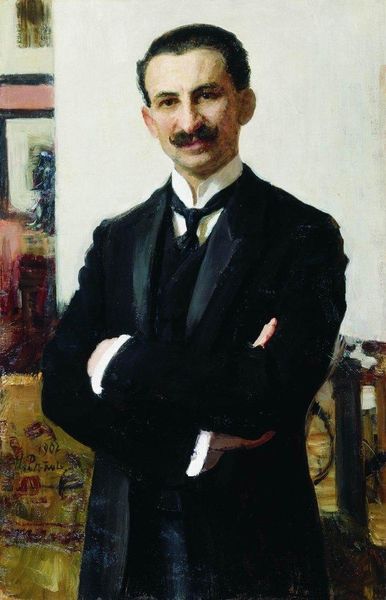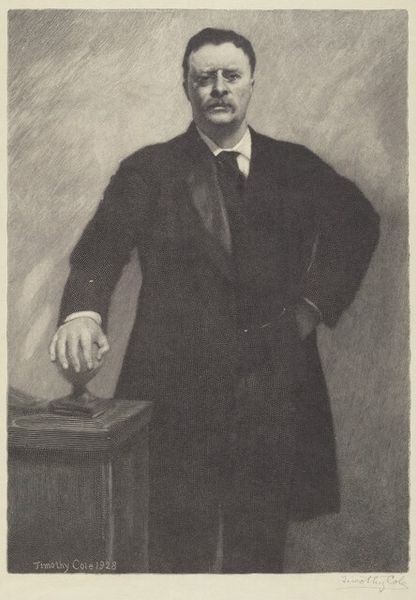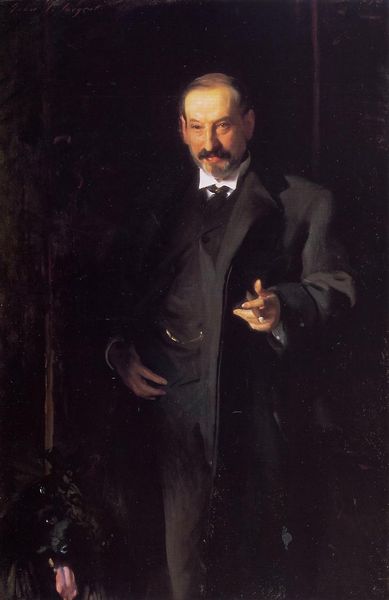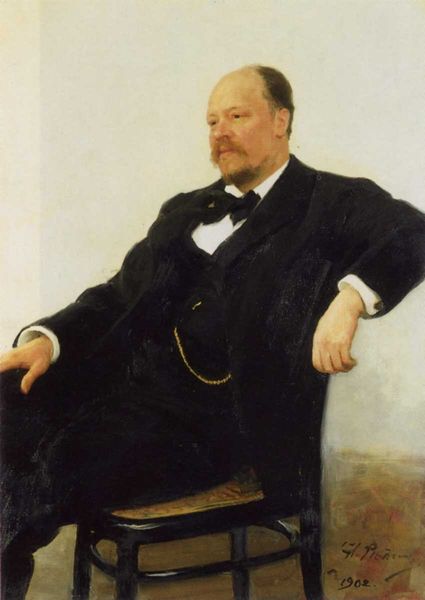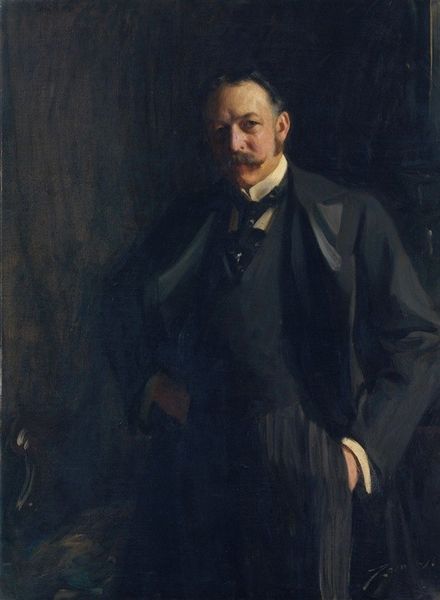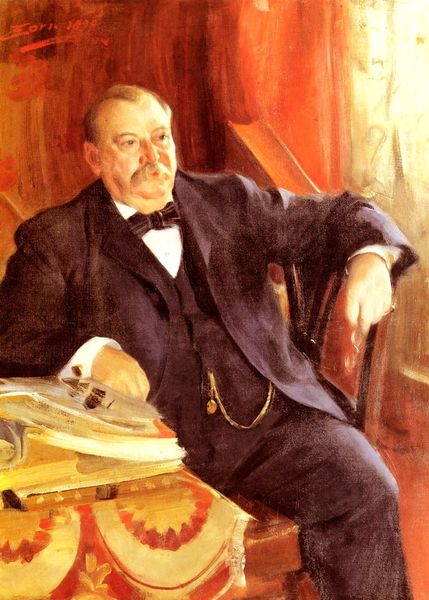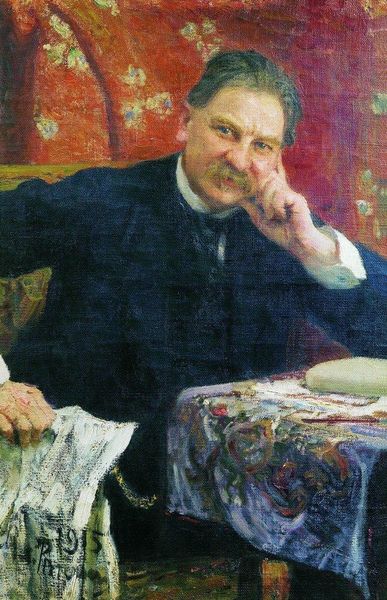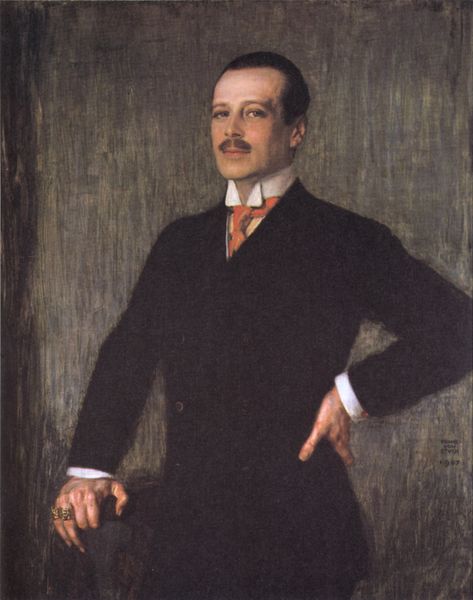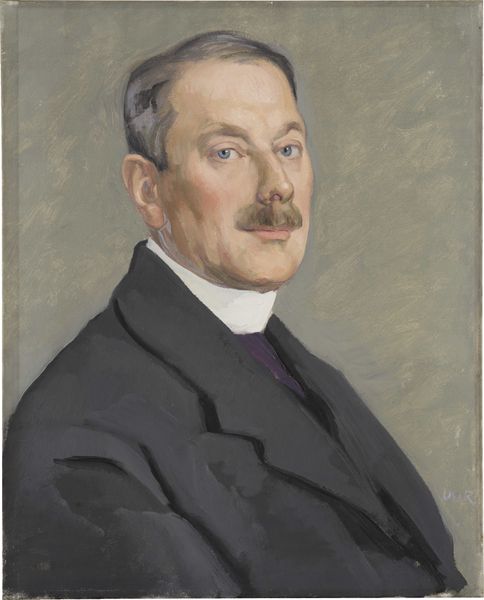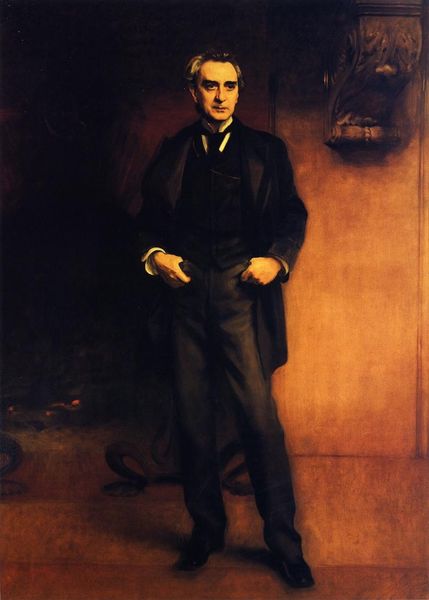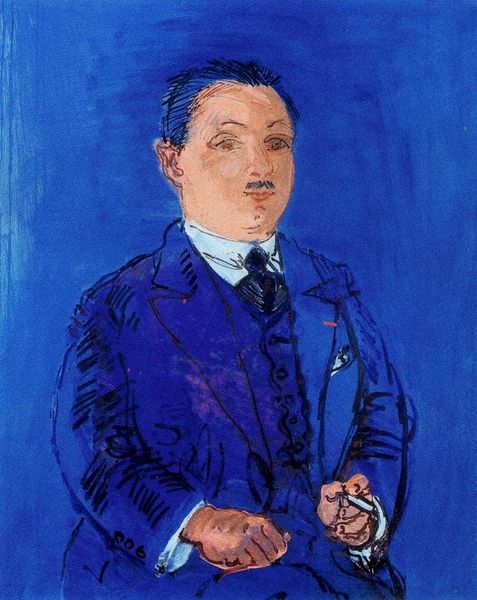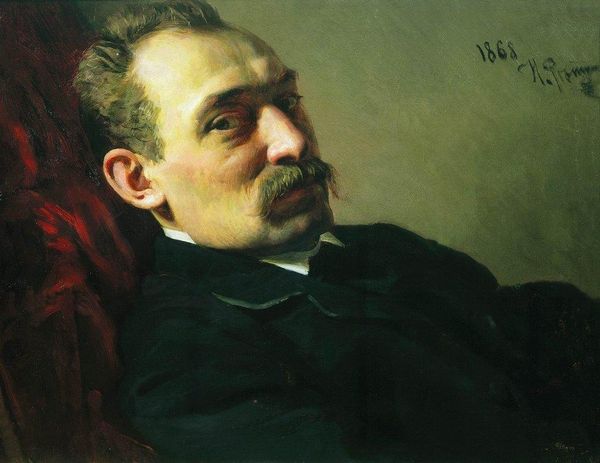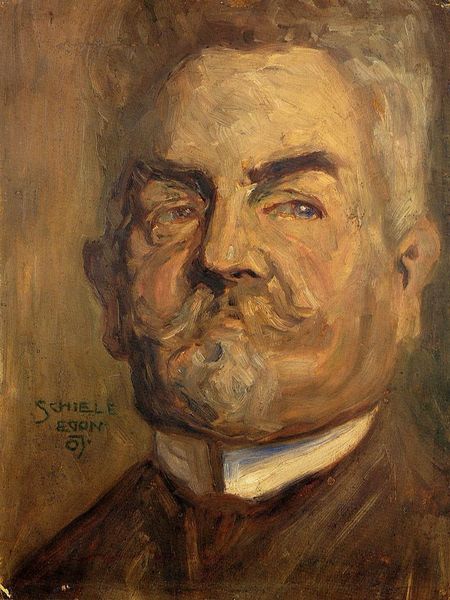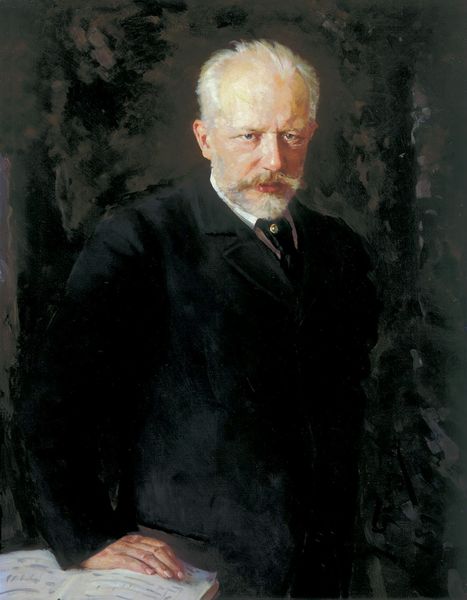
Dimensions: 120 x 90 cm
Copyright: Public domain
Editor: So, this is Ilya Repin's "Portrait of the Composer Alexander Glazunov," painted in 1887 using oil. The texture of the fabric in Glazunov's suit is so palpable, you almost want to reach out and touch it. What can you tell us about this portrait? Curator: From a materialist perspective, consider the availability and cost of oil paints in Russia at this time. Who had access to commissioning portraits? How does the rise of industrial pigment production affect artistic practice? We can analyze how the choice of oil on canvas contributes to the overall presentation of Glazunov’s status, and how it relates to the commodification of art itself. Editor: That’s interesting. So the very materials used speak to power dynamics? Curator: Precisely. Think about the societal function of portraits, who they depict, and how access to materials informs artistic output. Is Repin using the tools available to him to challenge or uphold class structures through representation? This is where the intersection of art, labor, and societal context becomes really fascinating. Editor: I see, the simple act of painting, with these particular materials, positions the work within a complex economic and social framework. So, the 'Russian Avant-Garde' label, does that connect to material availability? Curator: The "avant-garde" label itself can be deconstructed. Whose materials were deemed worthy of artistic exploration? Was it about breaking free from academic traditions, or simply reflecting a shift in the material landscape of art production driven by capitalist enterprise and global markets? Editor: I'm definitely seeing this piece in a completely different light now. Curator: Good. Analyzing materials allows us to uncover hidden narratives and ask challenging questions about artistic intention and the relationship between art and the world around it.
Comments
No comments
Be the first to comment and join the conversation on the ultimate creative platform.
